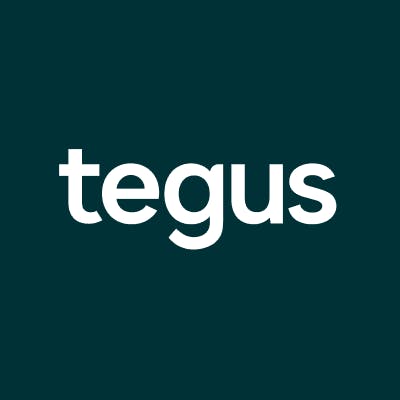Managing Director at iCapital on wirehouse distribution challenges and tech evolution
 Jan-Erik Asplund
Jan-Erik Asplund

Background
We spoke with a Managing Director at iCapital who oversaw wirehouse distribution channels generating approximately $7-8 billion in annual alternative investment flows.
Our conversation explored the economics of wirehouses, fee structures across different fund vehicles, operational challenges in the alternative investment ecosystem, and how technology limitations continue to create friction in what remains a relationship-driven business.
Key points via Sacra AI:
- Wirehouses (UBS, Morgan Stanley, Merrill, Wells) drive $7-8B in annual feeder fund flows plus another $6-8B in direct subscription workflows, but registered products like interval funds are gaining traction as they reach more investors without the feeder fund expense layer. "From a volume perspective, they're doing about 55 billion in new sales. However, what you would construe as a conduit for a fund or feeder fund going through those particular channels is probably about 7 to 8 billion dollars in flows a year... If you want to talk about direct funds at the wires, which are really more just subscription workflows, that goes to probably another 6 to 8 billion dollars on top of that."
- The alternative investment tech stack remains fragmented across multiple systems—with no DTCC-like central clearing—creating operational friction where third-party administrators use different databases, banks maintain separate processes, and platforms like iCapital struggle to replicate bank workflows rather than providing modular self-service tools. "There's no ledger that works; DTCC AIP hasn't worked for the most part. So you still have processes that are manual being automated, but we really don't have holistic workflows that are successful yet... A better model would be to give the banks the tools and the internal people the ability to set up and run their business on their own, without having to try to replicate everything they would have done on their own."
- While traditional feeder funds will persist, growth is shifting toward registered products, corporate structures that allow more than 1,999 investors, and potentially tokenization—with fee compression pushing platforms to evolve from basis-point models toward transaction-based enterprise contracts and technology services. "The traditional feeder funds will exist—these are certain funds that have been open that'll be around for 10 or 15 years. But the driving of growth is going to be more flexible products, potentially tokenization and distributed ledger, and more of an ecosystem versus the typical small segment of very large investors... The fee structures for iCapital in the traditional way that they were doing business will be lower. But there'll be more opportunity and more volume in the technology and services and integration side."
Questions
- Could you tell me how much net new volume per month your wirehouse channel typically drove at steady state? If helpful, you can answer based on net new volume at a representative wirehouse.
- Could you elaborate on the investment vehicles that made up most of those flows? Were there particular structures like Evergreen feeders, interval funds?
- When it comes to pricing within these wirehouse arrangements, could you break down how fees were typically structured between platform fees and manager fees? What were the typical basis point ranges by vehicle type?
- How much did increased use of registered fund structures like interval or tender offer funds impact that fee structure or iCapital's monetization model?
- Were there certain asset classes that stood out as especially strong contributors to flow through wirehouses during your time there? For example, private credit, real estate, secondaries, etc.
- In terms of partnerships, which specific wirehouses or asset manager partners drove the strongest growth for iCapital? And why do you think that was the case?
- When it comes to adviser onboarding and training, what motions or strategies most reliably translated into assets under management?
- What's the biggest misconception outsiders have about iCapital's wirehouse relationships and related business?
- Anything else you'd add that we haven't covered today? Maybe an overlooked trend or key shift you're watching in the wirehouse or distribution space?
- If you were redesigning iCapital's wirehouse strategy today, what would you prioritize differently? Is there anything you think could dramatically improve outcomes?
- What operational KPIs or signals from customers do you find best predict sustained volume or growth in the wirehouse channel?
- Which firms or technologies have come closest to addressing those holistic workflows effectively?
- From a systems design or partnership perspective, what would it take to actually deliver on that kind of modular bank-embedded workflow experience?
- Can you share more about the sales engagement model?
- How are winning shelf space decisions made inside wirehouse? What criteria are most impactful and what tends to win those evaluations?
- When a new fund wins shelf space and launches, what does a healthy adoption curve look like in that wirehouse setting over the first 6 to 12 months? What signals told you this fund was going to be a long-term sticky contributor?
- Was infrastructure demand advisor-driven or more manufacturer-pushed? And what role did education or macro narratives play in that success?
- Where do you see iCapital and the broader wirehouse alternative distribution landscape going over the next 3 to 5 years? What's most likely to shift or break out?
- What are the biggest operational bottlenecks today for iCapital and similar firms in effectively serving multiple wirehouses and RIA aggregators with different systems?
- What potential solutions or partnerships could begin to address these challenges effectively?
Interview
Could you tell me how much net new volume per month your wirehouse channel typically drove at steady state? If helpful, you can answer based on net new volume at a representative wirehouse.
If you look at the wirehouses, there are four of them. From a volume perspective, they're doing about 55 billion in new sales. However, what you would construe as a conduit for a fund or feeder fund going through those particular channels is probably about 7 to 8 billion dollars in flows a year. That has dropped off a bit given the proliferation of more direct models and more structured products—more registered products—where the feeder funds, which were the primary ways that allocations were being done at these wirehouses with these service providers, have slowed down a bit.
Could you elaborate on the investment vehicles that made up most of those flows? Were there particular structures like Evergreen feeders, interval funds?
We're talking about feeder funds because there are tech-only services. What I was talking about was really feeder funds. If you want to talk about direct funds at the wires, which are really more just subscription workflows, that goes to probably another 6 to 8 billion dollars on top of that. But to peel back and come back to the feeder funds, those were chunky and really were deal dependent. So they were a little asymmetrical as far as how the flows came in. Primarily what comes in is recurring products, like secondaries adding on to secondary funds, big credit funds, big distress funds, and then normal real estate and other products that may come out on an episodic basis.
When it comes to pricing within these wirehouse arrangements, could you break down how fees were typically structured between platform fees and manager fees? What were the typical basis point ranges by vehicle type?
Talking about funds, you have to start with the service fee. That's the administrative fee on top of any expenses. Those simply go from anywhere from 15 to 30 basis points just to put a range on there. On top of that, you have the management fees, and the wirehouses and the groups specifically versus other providers negotiate terms where they may receive probably 100% of the first year's management fee paid to them over a certain period of time. In addition to any placement fees paid by the client, on top of the service fees.
The asset managers, most of these products typically charge somewhere from a quarter to 1.75 percent management fee on top of the carried interest of 15 to 20 percent or so. It depends on the product type. There may be certain avenues to reduce it, but here we're talking specifically about what you'd call 3(c) or 3(c)(7) feeder funds, 3(c)(7) products, so qualified purchaser only.
How much did increased use of registered fund structures like interval or tender offer funds impact that fee structure or iCapital's monetization model?
The monetization model, when you have a technology implementation, that model—when I say technology, I'm talking about workflows, subscriptions, reporting, etc.—those are typically not basis point. They are more of a service transaction-based model mostly, where the transactions are based on number of subscriptions.
You have an increase in volume due to the proliferation of some of these registered products because you're reaching a much wider number of investors, but you probably have a drop off to some degree in some of the allocation to feeder funds because of the additional expense. So it's a different model. You may have a basis point model that's put in place with certain asset managers, but if we talk specifically about the large wires, it's really more of a transaction-based fee and more of an enterprise contract situation.
Were there certain asset classes that stood out as especially strong contributors to flow through wirehouses during your time there? For example, private credit, real estate, secondaries, etc.
There's been a lot of private credit deals taken on the registered side in the last few years. Important to note on the registered products that the fees are paid differently. The investor isn't paying the fees. The bank or someone else or the asset manager is paying the fee because there isn't any scrape or any vehicle that you can access to collect fees. So it's a bit of a different model.
What's come up recently is a couple of things. There's a lot of private credit but also a lot of new innovation on interval funds, which are really starting to take shape and gain traction for some of the managers within the various platforms.
In terms of partnerships, which specific wirehouses or asset manager partners drove the strongest growth for iCapital? And why do you think that was the case?
Some of the growth has been from products sold in the wirehouses. There was surprising growth from firms like Stepstone in the registered space, which was unexpected. Obviously, Blackstone and some of their products. But it's also interesting that firms like KKR and Blackstone are building more corporate structures that require a qualified purchaser but are more corporate structures versus your typical 506(b) or 506(d) registrations. What that enables you to do is have a registration that's for qualified purchasers but not need a feeder fund and also allow far more than 1,999 investors. So that's another trend.
The big ones were Blackstone and Apollo with their flexible vehicles, and then firms like Stepstone and some others that really drove a lot of the growth in some of those products in the wirehouses.
When it comes to adviser onboarding and training, what motions or strategies most reliably translated into assets under management?
There are a few things. The general training that's available for advisers, making advisers qualify to sell the asset classes is very beneficial to the sales growth and translates into growth. The adoption of certain products based on the financial strategies has increased because of the lack of products that pay the adviser compensation that the alternatives do—that's been a real driver versus the education.
Educational strategies that line up with asset managers—almost like a university that one of these asset managers may do where they engage the advisers directly—is more effective than generic firm-based training that may come out on a product basis.
What's the biggest misconception outsiders have about iCapital's wirehouse relationships and related business?
A misconception is that the firm is only focused on those relationships. Those are large relationships, but I believe that the allocation, particularly the firms that are being engaged offshore, create a more robust relationship for some of these firms. So the misconception is that they're only focused on the wirehouse.
There's also a misconception that the feeder fund business will continue as it was in the wirehouse. That's going to decline, and it'll be incumbent on firms like iCapital and others to build more robust technology to support the banks because the banks aren't going to be able to continue to build it internally. There's a lot of ground to cover beyond the initial workflow that hasn't really been handled yet.
Anything else you'd add that we haven't covered today? Maybe an overlooked trend or key shift you're watching in the wirehouse or distribution space?
It continues to become competitive for assets to be raised in the space. It's really a scale play for asset managers. It's still tough to raise assets. The proliferation of registered funds is having a big impact on how capital is being raised, and it opens the door for more investors to come in, particularly in the accredited investor space. It's really about how well you organize, and there's certainly going to be a need to ramp up the tech that's enabled to these investors as well.
If you were redesigning iCapital's wirehouse strategy today, what would you prioritize differently? Is there anything you think could dramatically improve outcomes?
I would spend a lot more time on the tech implementation aspect of these engagements—large for some, small for others. I would really understand and build a team that can implement solutions specific to the bank platforms, how the banks operate, how they engage advisers, and how they interact with others. So really more of a holistic view.
Where they struggle, and others have struggled, is being a small firm trying to replicate tech that in some ways exists and in some ways didn't exist within the large bank tech infrastructure. They needed to have the right type of engagement teams on the ground and try to fit in where they could fit in and enhance the overall process.
They also needed to build more of a self-service model for these banks. Where they struggle is they end up doing the work on their side in a way that doesn't really work for the internal home offices at the banks, which creates friction with technical, procedural, and operational errors that has confounded the entire space.
So what I would do differently is really analyze, spend time engaging, drill into requirements, and put the right type of people in place to create flexible solutions.
What operational KPIs or signals from customers do you find best predict sustained volume or growth in the wirehouse channel?
One of the challenges everyone has is the workflows around investor subscriptions, ensuring the remediation of investor information—all the way from the inception of an account that's opened at the firm to the tax reporting and the specific jurisdictional tax reporting—and ensuring that's a seamless flow of information not affecting the financial adviser. That is key.
That's where some of the KPIs have been, where some of the failures have been operationally, trying to mechanically manage the process of updating funds on a site, updating information, updating documents. It's really about the seamless flow and ensuring that the interruptions are as little as possible.
There are some other firms that can manage KYC and other processes more holistically so investors aren't continually asked for the same information. All this came about to try to reduce friction in the alternative investment space. That was the objective of these firms to begin with, but they haven't mastered it. There's no ledger that works; DTCC AIP hasn't worked for the most part. So you still have processes that are manual being automated, but we really don't have holistic workflows that are successful yet.
Which firms or technologies have come closest to addressing those holistic workflows effectively?
The banks are trying to do it themselves to some degree, but they've failed in their aspect. iCapital and others have tried to do it where the banks haven't been able to, but the information is continually being asked for. They're leveraging third-party administrators, and every third-party administrator has a different process, a different database, so information isn't shared very well. It may be on a sole platform like iCapital, but it's not really managed. Then the review processes are often different from firm to firm.
Mix all that with internal bank processes that may be different, and you end up with a messy, labor-intensive process. The banks get frustrated with the provider when their home office is still involved, when they're involving advisers over and over again, and it's still a clunky experience.
There are also a lot of operational errors for some of these platforms because they're trying to replicate the entire process for banks. A better model would be to give the banks the tools and the internal people the ability to set up and run their business on their own, without having to try to replicate everything they would have done on their own.
From a systems design or partnership perspective, what would it take to actually deliver on that kind of modular bank-embedded workflow experience?
The whole model here is what you'd call a hosted model. In the hosted model, you have the tools, the database, and the structure that enables the people at the service providers to open a fund, create a fund, manage it, and manage processes. Today you give visibility to some of these home office personnel.
What you could do is offer them the same module, let them work on that side, and let them self-service to their advantage. Because what happens is you end up with a subscription-based or transaction-based event, and then you create all these workflows and manual processes, which creates a less than ideal margin for the service provider when they're doing all the work in addition to managing the tech.
Whenever there's an issue, it eats into the resource allocation model and creates a less than ideal profit center, when you should be driving significant, almost pure software-based profit margin on that business. When you mix in operational inefficiencies, it creates issues.
So it's about modularizing, creating modules, and enabling the banks to do it themselves. Certain banks have asked for this. That creates more efficiencies and enables the bank to reduce staff. You can have that staff anywhere, so it's more of an outsourcing/co-sourcing model but much more effective because of the nuances of some of the applications.
Can you share more about the sales engagement model?
The sales engagement model in these wirehouse is very different on a product basis with the asset managers, and that informs how the whole product development and all the other aspects from the service providers work as well.
In tracking sales, the products are sold, not bought. It still requires significant concentration of individuals to work in the wire houses. On the registered fund side, the four wire houses are probably still concentrating about half of the alternatives that are sold in the industry, including all the RIAs and super RIAs. That's more so on these registered products, which are more advantageous now. A lot of that's probably because of this placement brokerage model.
You have to acknowledge the sales model and how it works, and how these firms get into the market. It still requires, to this day, a people concentration. You really need to make the investment and have a staff to get into those places and get into the offices and deliver. It's more concentrated than in an RIA space.
How are winning shelf space decisions made inside wirehouse? What criteria are most impactful and what tends to win those evaluations?
First and foremost, they look at the track record of the manager, and then operational structure. Track record is important. Operational structures are key now, more important than they used to be. Shelf space is relationship-based.
Commercially, they talk to large advisers. What are they looking for? What don't you have on the shelf? Is it a private credit offering? Is it venture capital that you don't have today? Is it venture capital opportunity with a great manager? It's about reputation.
It's still harder to sell across the board at these wires if it's not more of a commercial opportunity. They've moved away from just using every Blackstone product. They certainly have more of a diverse view of managers. But track record, operational structures, the ability to support, and obviously the compensation they can offer to come on the platform are all important.
Each one of these platforms is going to ask for money as effectively not just a marketing budget, but to really get on the platform. They're going to ask for that upfront management fee, etc.
When a new fund wins shelf space and launches, what does a healthy adoption curve look like in that wirehouse setting over the first 6 to 12 months? What signals told you this fund was going to be a long-term sticky contributor?
Certain funds take years to ramp up. We've seen things like infrastructure gain traction in some of these wirehouses. It was really the ability to offer more diversified outcomes.
If it's a product like a hedge fund that's going to have more monthly returns, it's really about the return profile as it moves up. Typically, the PE funds are sold, they have to close, and that's it.
For registered products, it becomes more of a return profile. With Evergreen or open funds, it's a continual relationship with the people at the firm and those in the wirehouses, which is really how it's mostly done. It's still a relationship-based business.
As we said earlier, the funds are sold, not bought. So it's really about who's in there, who's building relationships, and what they can provide.
Was infrastructure demand advisor-driven or more manufacturer-pushed? And what role did education or macro narratives play in that success?
A lot of that was the availability of product, the environment, more of an adviser interest in longer-term plays, balancing some of the shorter-term plays. Infrastructure is typically a longer-term play, and there was some protection on the interest rate environment given the projects and sub-projects in some of these infrastructure funds.
As they started to build scale, there's also a belief that there's certainly a need for energy and other investments in the US and other markets. So that's created more demand and success in some of the infrastructure.
Some funds did not do well. But those that have the deployment of capital, the team, and more of a steady track record with some protection as far as distributions being made from a tax perspective have done very well. It's an example of a market need versus something just pushed from innovation, versus just another real estate play.
Where do you see iCapital and the broader wirehouse alternative distribution landscape going over the next 3 to 5 years? What's most likely to shift or break out?
The shift and breakout for iCapital and others is meeting technology expectations. The traditional feeder funds will exist—these are certain funds that have been open that'll be around for 10 or 15 years. But the driving of growth is going to be more flexible products, potentially tokenization and distributed ledger, and more of an ecosystem versus the typical small segment of very large investors.
In order to accommodate that, the technology uniqueness and value that firms like iCapital need to provide is going to drive how those relationships work. There's going to be fee compression. When these banks say fee compression, they need fee compression for their providers, not for themselves. They're still going to take what they're taking to some degree, but they're going to have to share what they take with investors. So the investor fee structure may come down a little bit.
The fee structures for iCapital in the traditional way that they were doing business will be lower. But there'll be more opportunity and more volume in the technology and services and integration side. They're really going to have to ramp up those areas where they haven't been really strong and support the wirehouses in a different way than they may be supporting an RIA or other RIA aggregators.
Also, the proliferation of RIA aggregators becoming more like mini wirehouses is a factor as well because they do business differently, but they'll be competing for advisers and shelf space in the next 6 to 12 months.
What are the biggest operational bottlenecks today for iCapital and similar firms in effectively serving multiple wirehouses and RIA aggregators with different systems?
There are a couple of bottlenecks today. One is the indexing, storage, and maintenance of documents associated with these products, making sure they're up to date and tracked. Another is the continued reliance on the LP structure versus a more flexible structure for each of these products, which creates significant legal expense, structural expense, and other challenges.
Other challenges are about the referential data, updating information about investors, and ensuring investors' subscriptions, data, email, and KYC are managed properly. There's also the challenge of balancing the regulatory structure in certain countries—the proliferation of CRS and other joint initiatives to report underlying structures and individuals. They need to start doing that in the US as well, so you have a lot more identification of investors than you had before.
All that put together creates a lot of operational challenges that need to be solved, likely with technology and better processes. These have not been tackled in the last 5 to 10 years at all.
What potential solutions or partnerships could begin to address these challenges effectively?
All these things require a network of partnerships if anyone's going to be successful. Those partnerships would be with firms that are good with AML/KYC, firms that can create tokenization or ledger if iCapital or others aren't able to do it on their own, and consistent partnerships for exchanging data between wirehouses and other firms to the core platform like iCapital.
It's about better processes and understanding, and flexible technology. If you try to read every aspect or every question that might be on the subscription document, you'll probably get somewhere, but enlarging the process needs to be improved versus trying to automate anything anyone might say.
Disclaimers
This transcript is for information purposes only and does not constitute advice of any type or trade recommendation and should not form the basis of any investment decision. Sacra accepts no liability for the transcript or for any errors, omissions or inaccuracies in respect of it. The views of the experts expressed in the transcript are those of the experts and they are not endorsed by, nor do they represent the opinion of Sacra. Sacra reserves all copyright, intellectual property rights in the transcript. Any modification, copying, displaying, distributing, transmitting, publishing, licensing, creating derivative works from, or selling any transcript is strictly prohibited.












